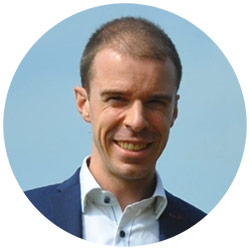Chemical recycling of rigid foam
🡄 Go to sustainability overview
The core of our PIR insulation boards is rigid foam – a material that traditionally ends up in landfill sites or incinerators for energy recovery. With Recticel Insulation, we want to reassess the end-of-life management of this waste foam and find a way to reuse it in new insulation of the same quality and performance as the original board. In fact, we’re exploring an innovative way to close the loop on our foams and we’re doing it through chemolysis.
Progress status
| 🚀 STAGE | Study 🡆 LAB TESTING 🡆 Pilot trial 🡆 Launch 🡆 Upscale |
| 📈 NEXT STEP | Launch a follow-up project with a research institution to reduce the carbon footprint of the recycling process, improve cost efficiency, eliminate contamination, and scale up for industrial production |
What is it?
Chemolysis or chemical recycling is a depolymerisation process that uses chemical agents to break down a compound – in this case: rigid foam – into its constituent parts. Simply put, it reverses the production process of rigid foam and returns it to its original materials.
Our aim is to use this method to return waste foam to its original quality and performance for the production of new insulation boards.
How do we do it?
We’ve been engaged in a 3-year research project around insulation with a rigid PIR foam core and a facing material. The project involved recycling the rigid foam into MDI and polyols using chemolysis, purifying both components into the constituent parts of the foam, and using them as building blocks for new rigid foam.

“Chemical recycling of polyisocyanurate (PIR) foams has generally received limited attention due to PIR’s high chemical stability. With this project, we want to be a pioneer in the industry to find a truly circular solution for PIR foam.”
The result
The process used in this lab study has the potential to reshape the industry from a linear to a circular one. It doesn’t just provide an innovative and feasible technical solution but also an environmentally friendly alternative for the recycling of rigid foam boards. The long-term objective is to scale up our findings and apply them to the waste foam from the production, construction, and end of life foam.